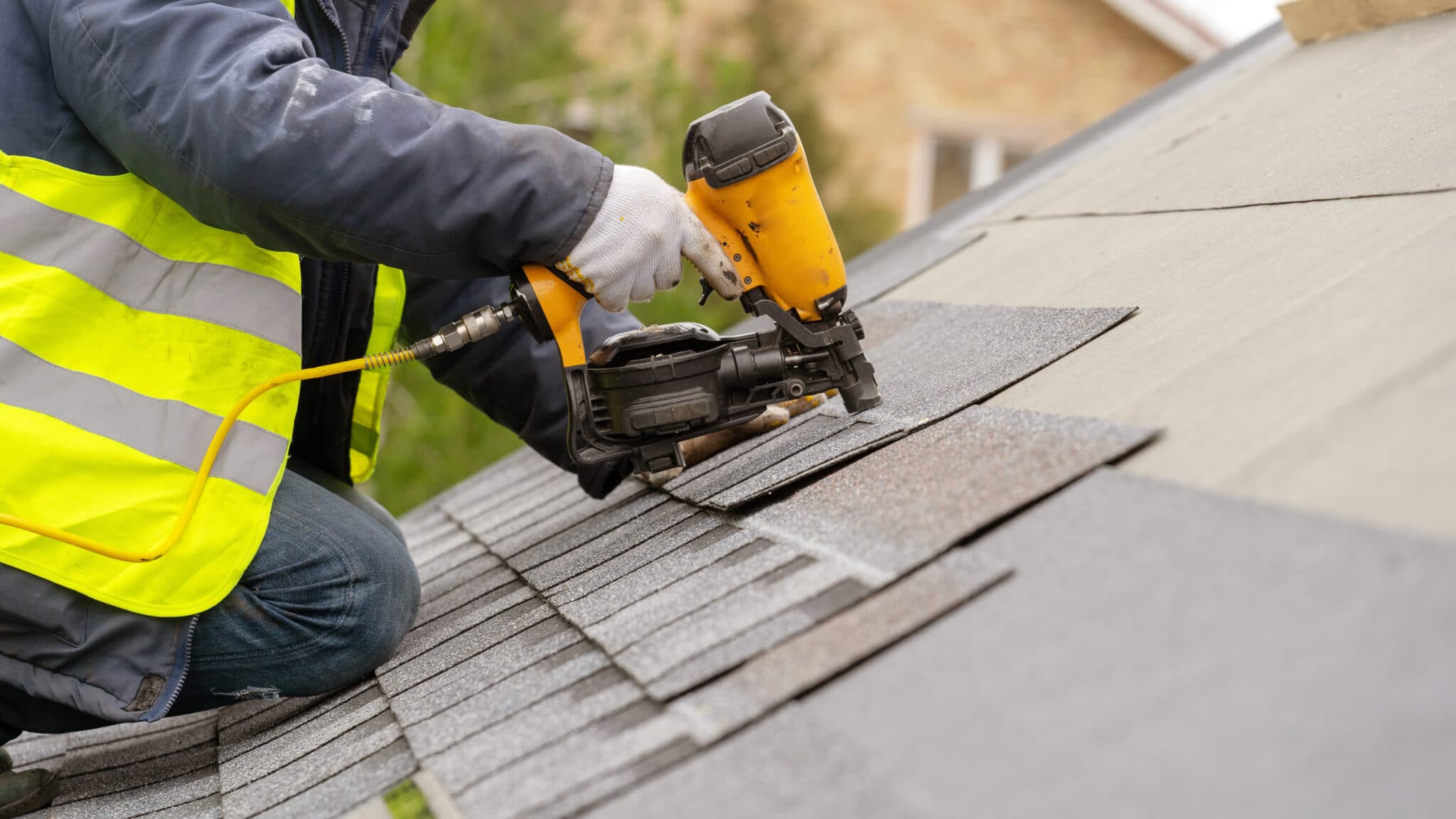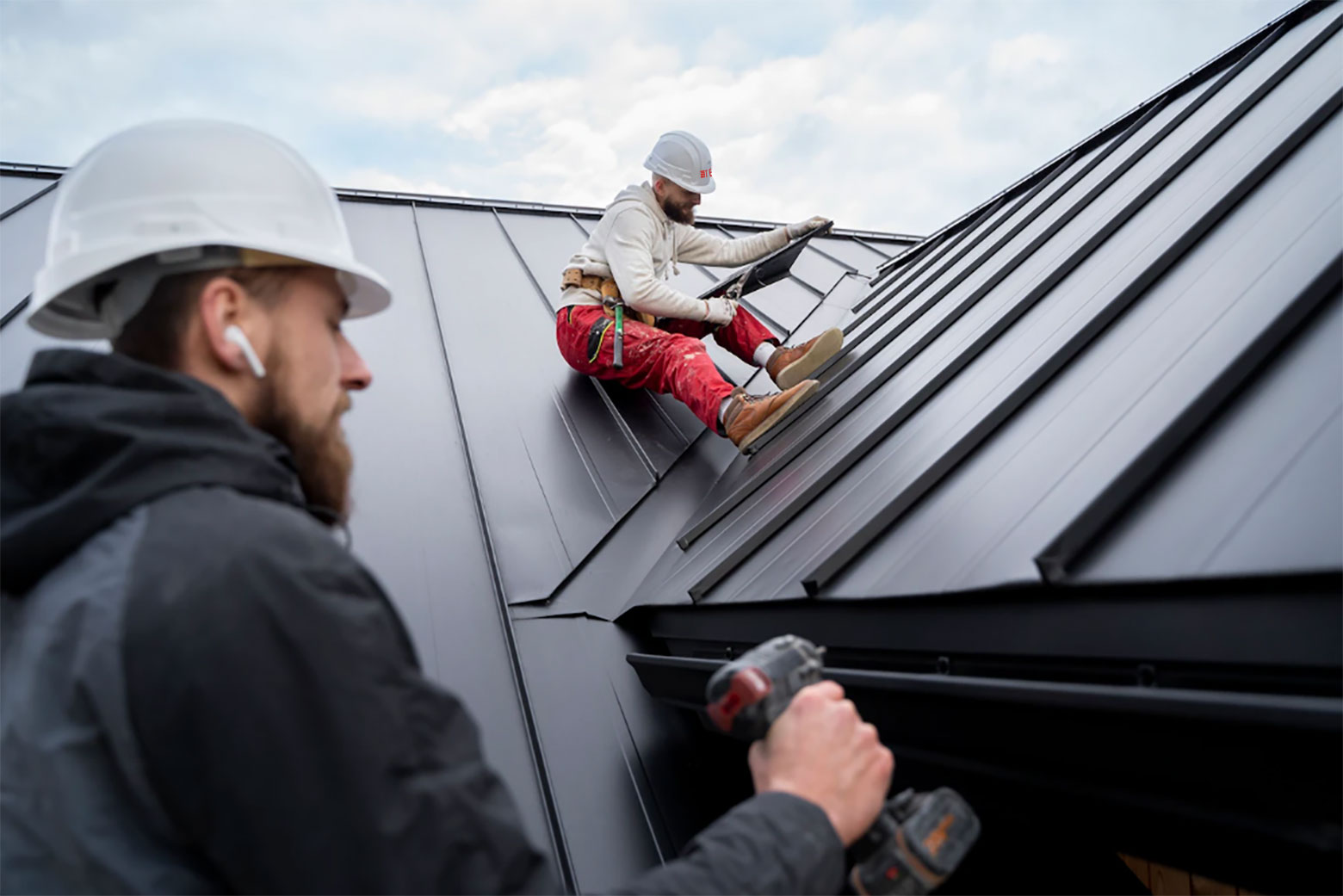Roofing Companies Oahu: Relied On Experts for Your Roofing Needs
Roofing Companies Oahu: Relied On Experts for Your Roofing Needs
Blog Article
Understanding the Various Sorts Of Roofing Systems: A Comprehensive Overview for Homeowners
With a variety of options-- varying from the standard gable to the contemporary level-- each type offers distinct advantages and difficulties that need to straighten with the property owner's environmental factors to consider and particular demands. As we explore the details of different roof covering kinds, it ends up being evident that one dimension does not fit all; the appropriate choice might stun you.
Gable Roofing Systems
Gable roofs, characterized by their triangular form, are among one of the most preferred roof designs because of their simpleness and performance in dropping water and snow. This style includes two sloping sides that fulfill at a ridge, enabling effective drain and decreasing the danger of water accumulation. The steep pitch frequently related to saddleback roofs improves their capability to handle heavy rainfall, making them appropriate for numerous environments.
Along with their functional benefits, gable roofings use aesthetic versatility. They can be adapted to various building designs, from standard to modern-day homes. The layout can additionally accommodate added attributes such as dormer home windows, which boost natural light and air flow in the attic space.
Additionally, gable roofs provide sufficient room for insulation, adding to power effectiveness. House owners can select from a range of roof materials, including asphalt tiles, steel, and floor tiles, better boosting personalization options.
In spite of their advantages, saddleback roofs may require added support in areas susceptible to high winds or heavy snowfall. Generally, the saddleback roof stays a popular option because of its mix of performance, longevity, and visual allure.
Apartment Roofs
Level roofs are frequently identified for their minimalist design and practical applications, especially in industrial and commercial settings (oahu roofing). These roofings feature a nearly straight or horizontal surface, which enables simple construction and flexible space utilization. While they may lack the visual appeal of pitched roofs, flat roofings provide countless advantages, specifically in metropolitan settings where making best use of area is critical
Among the primary benefits of level roofing systems is their accessibility. Home owners can utilize the roof covering space for different purposes, such as rooftop yards, terraces, or solar panel setups. Additionally, flat roofings are generally more economical to install and maintain contrasted to their sloped counterparts, as they need fewer materials and labor.
Nonetheless, level roofs do present certain difficulties. Correct drainage is vital to prevent water pooling, which can lead to leakages and architectural damages. Hence, choosing premium waterproofing products and regular evaluations are essential for ensuring longevity. Common materials used for flat roofing systems consist of built-up roof covering (BUR), customized bitumen, and single-ply membranes, each offering unique advantages. On the whole, flat roofs act as a practical and adaptable choice for numerous property owners and companies alike.
Hip Roofing Systems
Hip roofing systems are characterized by their sloped sides that converge on top, developing a ridge. This layout is distinct from saddleback roofs, as all 4 sides of a hip roofing incline downwards toward the walls, giving a much more steady framework. The angle of the inclines can vary, enabling convenience in building looks and functionality.
One of the main benefits of hip roofs is their capability to withstand heavy winds and damaging weather. The sloped surface areas make it possible for better water drainage, decreasing the risk of leakages and water damages. In addition, hip roofings supply increased attic room area, which can be utilized for storage space or perhaps exchanged habitable locations.
Nonetheless, building a hip roofing system can be extra expensive and complex than simpler roofing system kinds, such as gable roof coverings. The additional product and labor associated with developing the slopes and ensuring appropriate architectural stability can result in higher expenditures. In spite of these downsides, numerous home owners prefer hip roofing systems for their resilience, aesthetic allure, and possibility for power efficiency.
Mansard Roofings
Mansard roofings, frequently identified by their unique four-sided style, attribute two slopes on each side, with the reduced slope being steeper than the upper. This architectural style, stemming from France in the 17th century, is not only aesthetically appealing however useful, as it takes full advantage of the useful area in the upper floors of a structure. The high reduced incline permits more headroom, making it a perfect selection for lofts or attics, which can be transformed right into living areas.
Mansard roofing systems are defined by their convenience, suiting numerous architectural designs, from traditional to contemporary. They can be created with various products, consisting of asphalt tiles, slate, or steel, giving house owners with a series of alternatives to fit their spending plans and choices. In addition, the style permits for the combination of dormer windows, enhancing natural light and air flow in the top degrees.
Nonetheless, it is vital to think about the prospective drawbacks. Mansard roofs may require even more upkeep due to the complexity of their layout, and their steep slopes can be testing for snow and rain overflow. In general, mansard roofings combine elegance with usefulness, making them a prominent choice amongst property owners seeking distinct building features.
Lost Roofings
As house owners increasingly seek simpleness Visit This Link and performance in their architectural designs, lost roof coverings have become a preferred option. Characterized by a single sloping plane, a shed roof covering presents a minimal aesthetic that matches various home styles, from modern to rustic.
One of the visit this web-site key benefits of a shed roofing is its straightforward construction, which often equates to decrease labor and product costs. This style enables reliable water drainage, minimizing the danger of leakages and water damages. Furthermore, the upright incline provides sufficient area for skylights, boosting all-natural light within the interior.
Shed roofing systems likewise supply versatility in terms of usage. They can be properly integrated into additions, garages, or outdoor structures like pavilions and sheds. Moreover, this roofing style can fit different roof covering products, consisting of steel, asphalt roof shingles, and even environment-friendly roofings, straightening with eco-friendly initiatives.
However, it is necessary to think about regional climate conditions, as hefty snow tons may demand adjustments to the roof covering's angle or framework. Overall, lost roofs present a practical and aesthetically pleasing choice for house owners wanting to take full advantage of performance without compromising design.
Verdict


Gable roofs, defined by their triangular form, are amongst the most popular roof styles due to their simpleness and effectiveness in losing water and snow. oahu roofing. The steep pitch wikipedia reference commonly associated with gable roof coverings enhances their ability to deal with hefty precipitation, making them ideal for various environments
While they might lack the aesthetic charm of pitched roofings, level roofings offer various advantages, particularly in metropolitan settings where taking full advantage of room is crucial.

Report this page